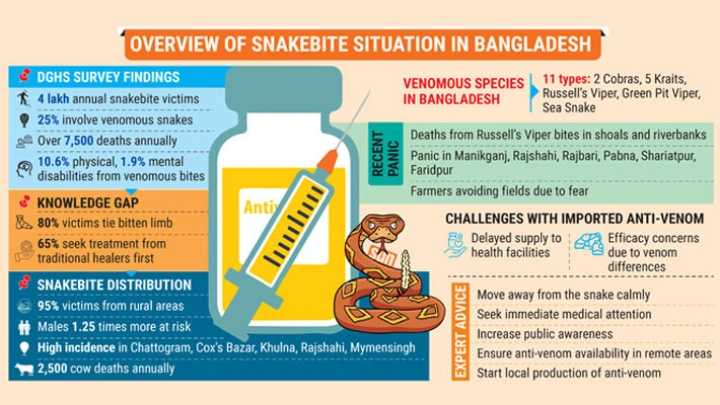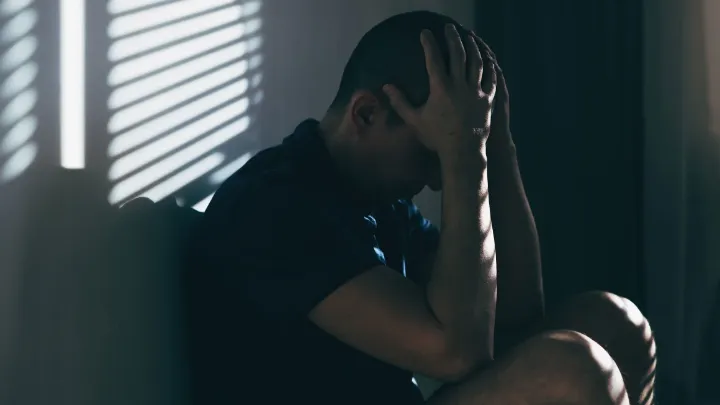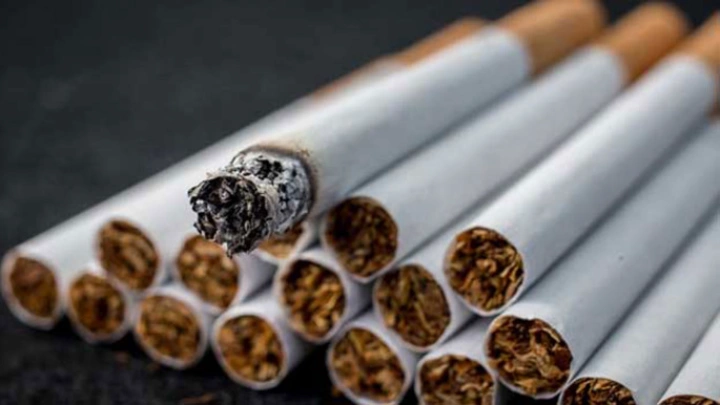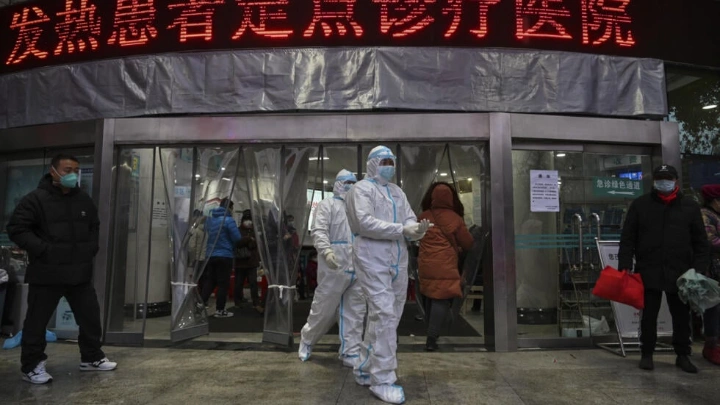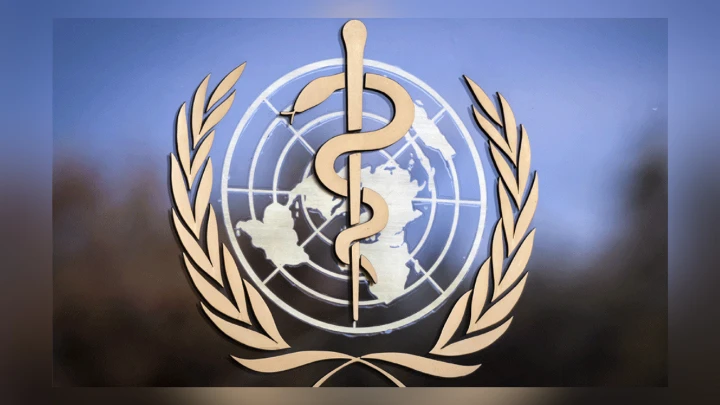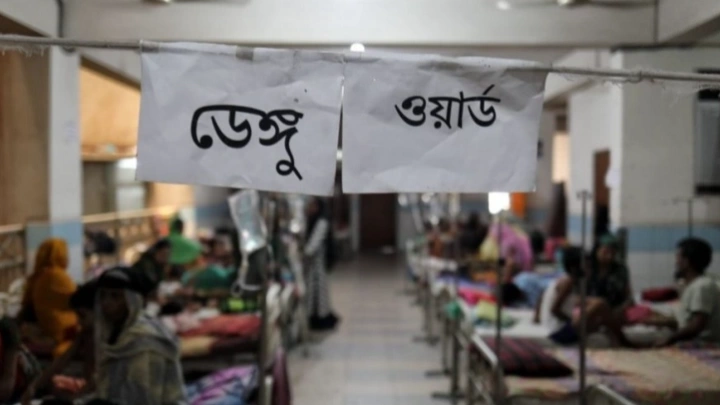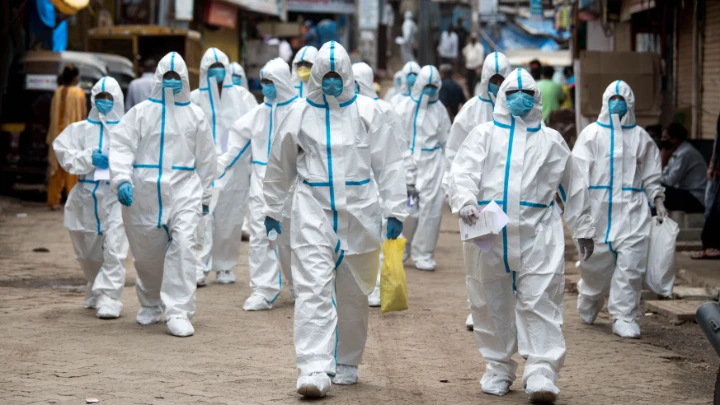Snakebites: Lack of awareness, antidote shortage fuel deaths
DailySun || Shining BD
A lack of awareness about snakebites and their treatment, coupled with a shortage of readily available anti-venom, are major factors behind the rising number of snakebite fatalities in the country.
Besides, the country’s complete reliance on imported anti-venom, all of which comes from India, hampers its efforts to effectively address the issue, as experts have pointed out. They urge increased public education and the local production of anti-venom to ensure timely and effective treatment.
Deadly consequences of lack of awareness and delayed treatment
A recent survey by the Directorate General of Health Services (DGHS) revealed that around four lakh people fall victim to snakebites in the country annually, with one-quarter involving venomous snakes.
Tragically, over 7,500 people succumb to these bites each year. Furthermore, venomous bites result in 10.6% physical disability and 1.9% mental disability among victims, according to the study titled “National Survey on Annual Incidence and Epidemiology of Snakebite in Bangladesh”.
It also exposed a critical knowledge gap among the population. “About 80% of people tie the bitten limb after being bitten, and 65% first seek treatment from Ojha [traditional healers] or conventional medicines,” the report noted.
Experts said most of the deaths from snakebites in the country are caused by the absence of proper treatment and not having enough anti-venom in the nearest hospital.
Talking to the Daily Sun, Dr Abdullah Abu Sayeed, assistant professor at the Chattogram Medical College (CMC) and coordinator at the Venom Research Centre, emphasised the importance of immediate action. “Victims must resist panic and carefully move away from the snake,” he said, adding that, “The most crucial step is to rush them to the nearest hospital as soon as possible.”
Snakebite distribution and venomous species
The DGHS survey found that 95% of snakebite victims are from rural areas, with males being 1.25 times more at risk than females. The incidence of snakebites is notably high in Chattogram, Cox’s Bazar, Khulna, Rajshahi, and Mymensingh, according to the report.
“Males aged 25-55 are most likely to be bitten by snakes around their homes in the evening to midnight hours,” noted the report.
The study also highlighted that around 2,500 cows die annually from snakebites in Bangladesh.
Dr Abdullah Abu Sayeed said there are 11 types of venomous snakes in Bangladesh, including two types of cobra, five types of krait, Russell’s viper, green pit viper, and sea snake. “Ten types of venomous snakes live on land and one in seawater,” he added.
He also noted that the anti-venom available in government hospitals is imported from India, but there is a difference in venom composition between Indian and Bangladeshi snakes.
Recent surge in panic
Locals and administration sources said there has been a recent panic in different parts of the country due to several deaths from poisonous snakebites, especially by Russell’s viper.
Snakebite incidents are occurring mainly in shoals and riverbank areas, including Manikganj, Rajshahi, Rajbari, Pabna, Shariatpur, and Faridpur districts.
Locals in Rajbari reported many incidents of snakebites and deaths, particularly in the Padma riverbank area. “People of the area are now panicked about the snakebite,” Rajib Hossain, a local journalist in Goalanda upazila, told the Daily Sun.
Challenges of imported anti-venom
The health directorate claims that at least two doses of anti-venom are kept in every upazila health complex across the country, and an additional five doses are available to each district civil surgeon, but many health facilities get the anti-venom delayed.
Besides, the imported anti-venom’s effectiveness is hampered by several factors.
Dr Abdullah Abu Sayeed emphasised the key issue: the anti-venom is imported from India. There are concerns that the venom composition of Bangladeshi snakes might differ from their Indian counterparts, potentially reducing the imported anti-venom’s efficacy.
Call for local production and public education Experts emphasise the need for increasing public awareness about snakebites and their treatment, ensuring the availability of anti-venom at the grassroots level, especially in remote areas, and initiating local production of anti-venom.
“Anti-venom is available in all upazila health complexes across the country. The government provides polyvalent anti-venom free of charge,” Dr Md Robed Amin, line director (NCDC) of the Directorate General of Health Services (DGHS), told the Daily Sun.
He mentioned that Incepta Pharmaceuticals, a private Bangladeshi company, imports anti-venom from India due to the lack of local production. “The anti-venom is effective against Cobra, Common Krait, and Russell’s viper venom. This year, we have procured 20,000 vials at Tk1,400 per vial and have requested an additional 10,000 vials from the WHO,” Robed Amin added.
He, however, said they have written a letter to the Essential Drugs Company Limited (EDCL) to manufacture the anti-venom in the country for cost-effectiveness and availability of the drug in the country.
According to the sources concerned, the World Health Organisation (WHO) adopted a resolution in 2017 that snakebite patients would have to be treated with anti-venoms produced in their native country.
To combat this crisis, the experts also stressed the need for a nationwide public awareness campaign. Educating people on proper first-aid measures and the importance of seeking immediate medical attention at hospitals can significantly improve survival rates.
Shining BD

